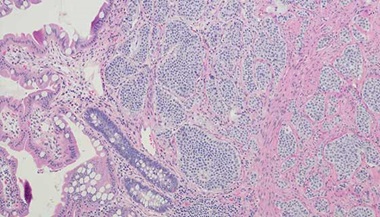Colon Cancer Screening: What You Need to Know
Colorectal cancer refers to cancers in the colon and the rectum, and is currently the second leading cause of cancer death in the United States. However, if caught early, many colon and rectal cancers can be treated successfully. The best way to decrease your risk of serious cancer is to get tested for it.
Because colon and rectum are both parts of the large intestine, screening for cancer in these areas is similar. These tests can also help your doctor identify non-cancer causes of problems you might be experiencing, such as chronic diarrhea, constipation, stomach pain and signs of intestinal bleeding (blood in the stool or low iron).
Who Should Get Screened and When: Colon Cancer Screening Guidelines
The timeline for colorectal cancer screening differs and depends on which risk category you are in. Risk factors for colorectal cancer include age, ethnicity, lifestyle, family history and genetics, and personal history of certain health conditions. Discuss with your primary care provider how to assess your risk, and plan screenings accordingly.
For people at average risk, the American Cancer Society recommends starting colorectal cancer screenings (typically colonoscopies) at age 45 and continuing them until age 75, when the need for screenings is assessed. Colorectal cancer screening is no longer needed for people 85 and older.
After your first colonoscopy, the endoscopist will determine when your next colonoscopy should be, depending on the findings of the most recent colonoscopy and your family history.
What if the screening finds a polyp?
Most types of colon cancer develop slowly. In the lining of the colon, small growths of cells. called polyps, can develop. Polyps can be flat or look like tiny mushrooms emerging from stalks.
A polyp isn’t cancer, but if not detected and removed, it can become cancerous. The transition is slow — a polyp typically grows for about 10 years before it becomes cancerous and starts to spread. Regular screening for colorectal cancer can interrupt the process.
If a colorectal cancer screening identifies a polyp, your doctor may recommend increasing the screening frequency.
Colon Cancer Tests
There are several tests that can pick up signs of colorectal cancer. The two main types are:
- Visual tests that allow the doctor to see the inside of the colon and rectum
- Fecal tests that examine the stool for blood or DNA markers of cancer
Your doctor will recommend the best screening method for you, based on your symptoms, cancer risk and other factors.
Colonoscopy
A colonoscopy is the gold standard of colon cancer screening and the most effective way to identify this cancer. It enables the doctor to see the entire length of the lower intestine by using a flexible tube with a camera inserted through the anus. While watching a screen, the doctor directs the camera through the rectum and colon to identify polyps and other areas of concern. Suspicious growths can be removed during the colonoscopy and investigated with a biopsy.
You and your doctor may decide that a test other than a colonoscopy is sufficient if you have few risk factors for colon cancer. However, other tests need to be performed more frequently, and if their results are positive, you may still need a colonoscopy for a closer look, to remove a polyp or to treat a suspicious area.
Sigmoidoscopy
Like a colonoscopy, a sigmoidoscopy is a test during which a tube with a light and camera is used to view the interior of the intestine. For a sigmoidoscopy, the area examined is not the entire colon but only the sigmoid colon — the bottom third, where 60% of colon cancers occur. Because a sigmoidoscopy looks only at part of the colon, the preparation is simpler, and sedation may not be needed, as it is for a colonoscopy.
Sigmoidoscopies are not performed as frequently in the U.S. as colonoscopies, because polyps or colon cancer in the right colon and transverse colon can be missed during a sigmoidoscopy. But if a doctor believes that a patient’s symptoms are due to a problem in the lower colon alone, he or she may decide that a sigmoidoscopy is a better test.
Barium Enema
During a barium enema, the technologist fills the colon with barium liquid through an enema, and then an X-ray or a fluoroscopy (motion X-ray) is performed. The barium helps the doctor see the inner surface of the colon and rectum, and may help identify polyps or cancerous areas. A double contrast barium enema uses two types of barium for a more detailed picture.
Virtual Colonoscopy
A virtual colonoscopy is a three-dimensional CT scan that takes a detailed picture of the colon after it has been filled with air. Virtual colonoscopy may be an option for people who cannot have a conventional colonoscopy due to breathing difficulty, a twisted or narrowed colon, a bleeding disorder or other medical issues.
This test is less invasive, does not require sedation, and takes only 15 or 20 minutes to complete. However, small polyps might be missed during this test. And if polyps or suspicious areas are found, a regular colonoscopy might be needed to remove them.
To guard against colon cancer, your doctor will recommend a virtual colonoscopy every five years.
Stool Sample Tests
The benefit of stool sample tests is that they can be performed in the comfort of your home and mailed to a laboratory for analysis. However, the information that these tests provide is limited. Stool sample tests are usually used to catch warning signs of colorectal cancer, such as bleeding and certain cancer DNA markers. More testing is needed to explore the causes of blood in stool or DNA abnormalities. Also, negative DNA tests don’t always prove absence of colorectal cancer. They can miss 8% of colorectal cancers, 30% of polyps that will soon be cancer and 57% of polyps that may become cancer.
- A fecal occult blood test looks for hidden (occult) blood in stool. Samples from three bowel movements are collected and analyzed. Hidden blood in stool can indicate colon or rectal cancer, or another problem. The tests are simple: Your doctor gives you supplies, including one or more small paper cards. For each test, you collect a sample of stool and put it on a card, which is packaged and sent to a laboratory where it is tested for blood.
- A fecal immunochemical test is similar to fecal occult testing, except instead of a card, you place the stool samples in tubes of liquid and send the tubes to a laboratory. If the results are positive for the presence of blood, more testing, including a colonoscopy, might be needed. Your doctor may recommend a fecal occult blood tests or a fecal immune tests each year.
- Stool gene testing is a newer type of stool sample screening. In addition to testing for blood, the laboratory looks for elevated levels of altered DNA, which can indicate colon cancer. A single stool sample can be collected at home and sent to a laboratory for analysis. Your doctor may recommend this test every three years.
Digital Rectal Exam
During a digital rectal exam, the doctor inserts a gloved, lubricated finger into the rectum to feel for abnormalities. The colon is about 5 feet long, so a digital rectal exam is very limited in detecting colon cancer.







